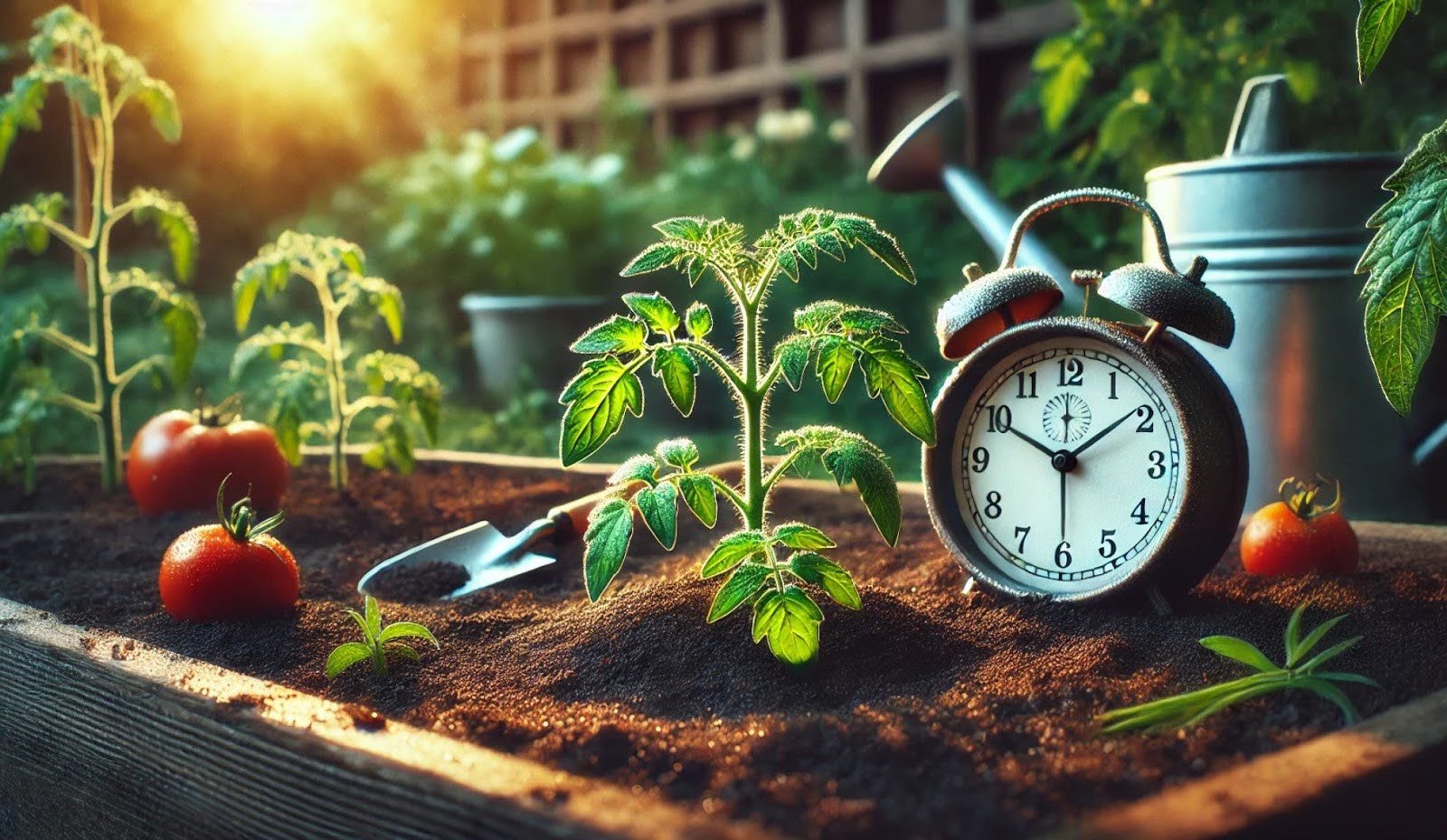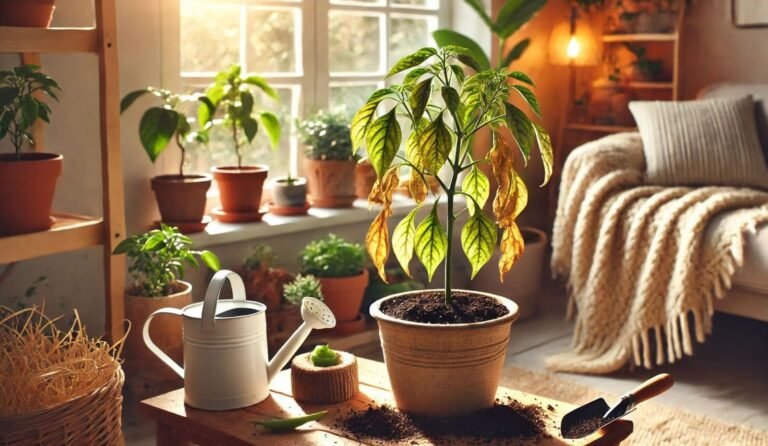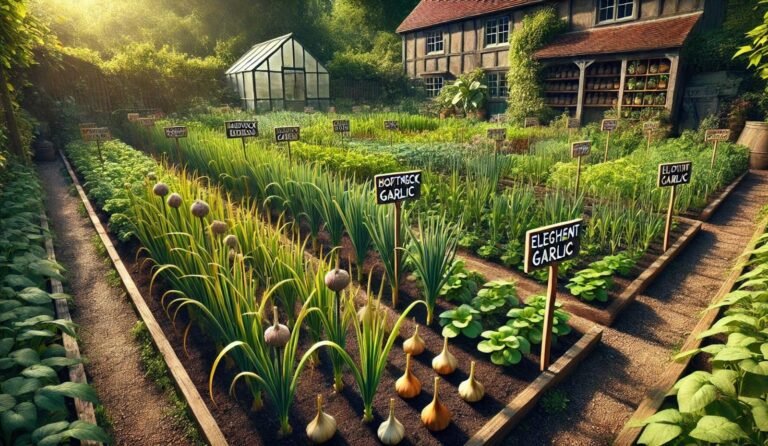Best Time to Plant Tomatoes for Maximum Yields
The best time to plant tomatoes can make or break your garden’s success. Plant too early, and frost might ruin your crop; plant too late, and you’ll miss peak harvest. Timing is everything, but it’s not one-size-fits-all. Factors like frost dates, soil warmth, and your growing zone play a huge role. Ready to uncover the secrets to growing juicy, sun-kissed tomatoes? Let’s dive in and get your timing just right!
Why Timing Matters When Planting Tomatoes
Tomatoes are warm-season crops, meaning they thrive in warm temperatures and plenty of sunlight. Planting them at the wrong time—too early or too late—can result in poor growth, lower yields, or even plant failure. Timing your planting ensures:
- Optimal germination and seedling growth.
- Strong root establishment.
- Healthy flowering and fruiting during the growing season.
Before we dive into specifics, let’s explore the basics of tomato growth to understand why timing is crucial.
Understanding Tomato Growth Basics
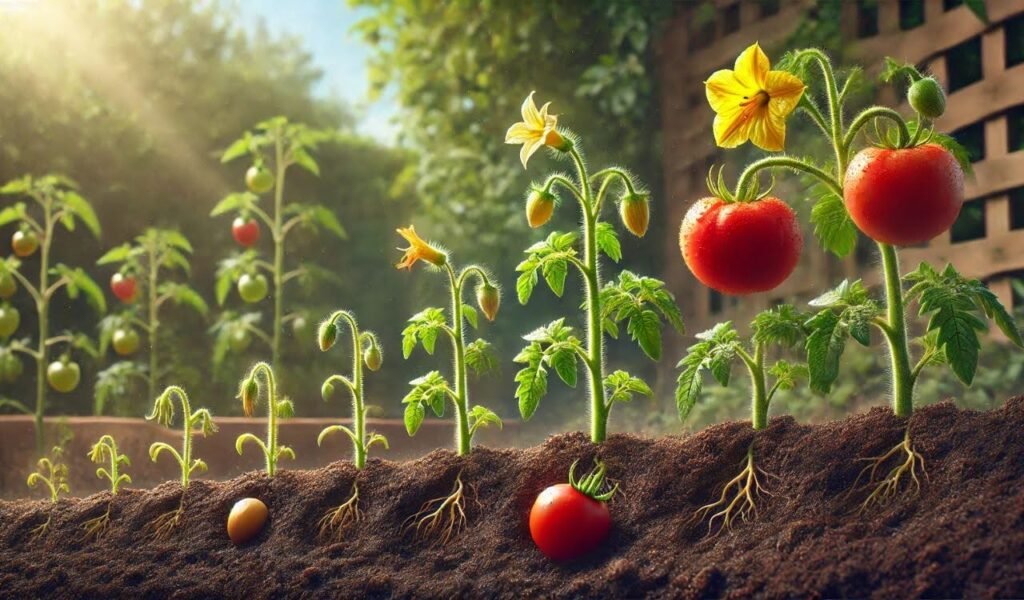
Temperature Requirements
Tomatoes are sensitive to temperature changes. The ideal temperature for growth ranges between 70–85°F during the day and no lower than 50°F at night. Anything outside this range can:
- Stunt seed germination.
- Delay plant growth.
- Affect fruit set (flowers dropping without forming fruit).
Sunlight Needs
Tomatoes are sun-loving plants and require at least 6–8 hours of direct sunlight daily for healthy growth. This makes timing your planting critical to align with the sunniest part of the year in your region.
Best Time to Plant Tomatoes Outdoors
Planting tomatoes outdoors largely depends on the climate in your area. The primary consideration is ensuring the risk of frost has passed and the soil has warmed sufficiently.
Factors to Consider
- Frost Dates: Tomatoes cannot tolerate frost, so planting them after the last frost date in your region is crucial. Check a frost calendar specific to your area for accurate timing.
- Soil Temperature: Tomatoes thrive when the soil temperature is at least 50°F. You can measure this using a soil thermometer. Cold soil can stunt root growth and delay plant development.
- Regional Planting Guides: Adjust your planting schedule based on your location:
a) Northern regions: Typically, late May to early June is ideal once the soil and air temperatures are warm enough.
b)Southern regions: You can often plant tomatoes earlier in spring (March-April) or even in late summer for a fall harvest.
When to Plant Tomato Seeds Indoors
Starting tomato seeds indoors is an excellent way to give your plants a head start, especially in cooler climates. Most gardeners start seeds indoors to ensure seedlings are ready for transplanting when outdoor conditions are favorable.
Timing Guide
Begin sowing tomato seeds indoors 6–8 weeks before your region’s last frost date. For example, if your last frost date is May 15, you should start seeds indoors between March 15 and April 1.
Benefits of Starting Indoors
Protects seedlings from fluctuating outdoor temperatures. Extends the growing season in areas with shorter summers. Gives you control over germination conditions like light, heat, and moisture.
Tomato Seeds for Planting: Seeds or Plants?
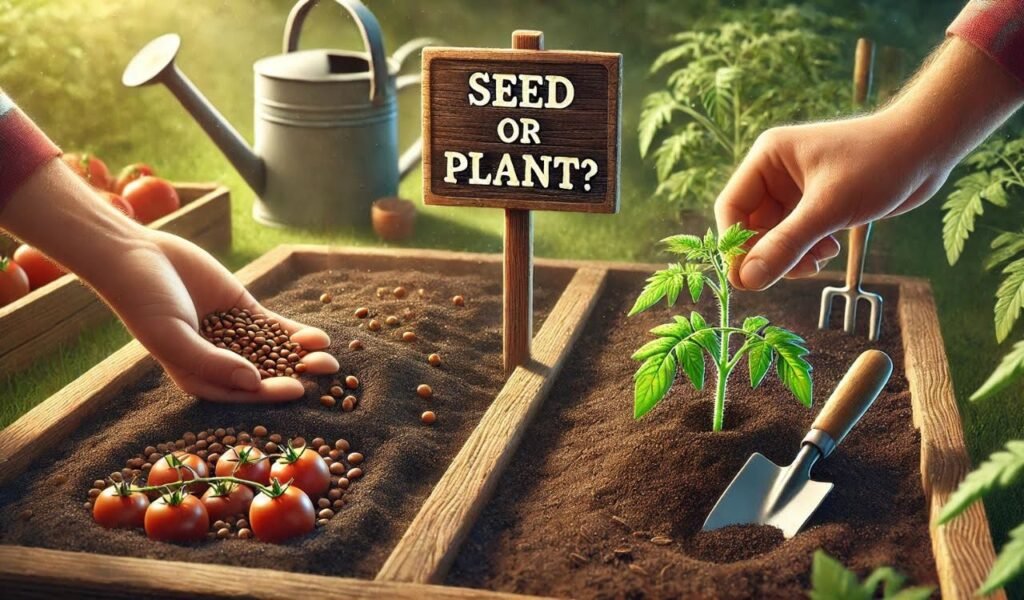
When growing tomatoes, you have two options: starting from seeds or buying young plants (seedlings). Both methods have their pros and cons.
Growing Tomatoes from Seeds
Pros:
Wider variety of tomato types (heirlooms, hybrids, etc.). Cost-effective for larger gardens. Full control over the growing process.
Cons:
Requires more time and effort. Needs proper indoor setup for germination.
Growing Tomatoes from Seedlings
Pros:
Convenient and time-saving. Ideal for beginners or those with limited time.
Cons:
Limited variety compared to seeds. Higher cost per plant.
Step-by-Step Guide to Planting Tomato Seeds Indoors
If you decide to grow tomatoes from seeds, here’s a comprehensive step-by-step guide:
1. Gather Your Materials
High-quality tomato seeds (heirloom or hybrid varieties). Seed trays or small pots. Seed-starting mix (light, well-draining soil). Grow lights (optional for low-light conditions). Spray bottle for watering.
2. Plant the Seeds
Fill your seed trays or pots with seed-starting mix. Plant seeds 1/4 inch deep, covering them lightly with soil. Space seeds at least 1–2 inches apart to give seedlings room to grow.
3. Provide Ideal Conditions
Keep the soil consistently moist but not soggy. Use a spray bottle to avoid overwatering. Maintain a temperature of 70–75°F for optimal germination. Provide 12–16 hours of light daily using grow lights or a sunny windowsill.
4. Monitor Growth
Germination typically occurs within 5–10 days. Once seedlings develop their first set of true leaves, thin them out or transplant to larger pots.
Planting Tomato Seedlings Outdoors
Once your seedlings are ready (about 6–8 inches tall with strong stems), it’s time to transplant them outdoors.
1. Prepare the Soil
Test the soil pH (ideal range: 6.0–6.8). Add compost or aged manure to enrich the soil.
2. Transplant with Care
Harden off seedlings by gradually exposing them to outdoor conditions over a week. Plant them deep into the soil, burying 2/3 of the stem to encourage strong root development.
3. Spacing and Staking
Space plants 18–24 inches apart to allow air circulation. Use stakes or cages to support the plants as they grow.
Common Mistakes to Avoid
Avoid these common pitfalls when planting tomatoes:
- Planting Too Early: Frost or cold soil can stunt growth.
- Overcrowding Plants: Leads to poor air circulation and disease.
- Overwatering: Causes root rot and other fungal issues.
Tomato Plant Time Lapse: What to Expect
Watching your tomato plants grow is incredibly rewarding. Here’s an approximate timeline:
Week 1–2: Germination.
Week 3–4: First true leaves appear.
Week 5–6: Rapid vegetative growth.
Week 7–10: Flowers develop and fruit set begins.
Week 11+: Fruits mature and ripen, ready for harvest.
FAQ
Can I Plant Tomatoes Indoors Year-Round?
Yes, with sufficient light (grow lights) and controlled temperatures, tomatoes can be grown indoors year-round.
What Happens If I Plant Tomatoes Too Early?
Planting too early exposes tomatoes to frost and cold soil, which can stunt growth or kill the plants.
How Long Does It Take for Tomato Plants to Produce Fruit?
On average, tomatoes take 60–85 days from transplanting to produce ripe fruit, depending on the variety.
Conclusion
Planting tomatoes at the right time is essential for a productive garden. By understanding your local frost dates, starting seeds indoors, and providing optimal growing conditions, you can enjoy a bountiful harvest of fresh, homegrown tomatoes. Whether you’re planting in your backyard or experimenting indoors, timing and preparation are the keys to success. Happy gardening!

